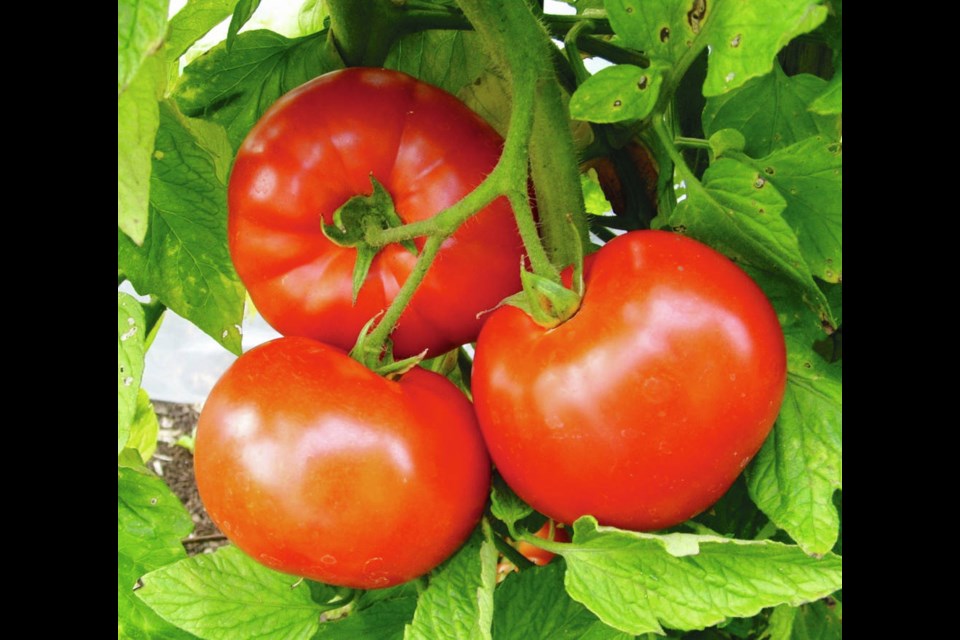I have a longstanding habit of reserving a page at the back of my gardening notebook for seeds and plants to acquire in the following year. They can be varieties recommended to me by other gardeners, ones I’ve noticed in a catalogue after I’d placed the current year’s order, or habitual residents of the garden for which I’ve run out of seeds.
For 2022, I’ll need more Aspabroc seeds. It’s become a favourite in the garden for its yield of mini-broccoli florets over several weeks and sometimes longer. I’ll be looking for more Lady Di runner bean seeds. It’s the best variety I’ve grown.
From William Dam Seeds, I’ll be ordering an award winning snapdragon called Twilight, a compact (30-cm) variety with dark bronze foliage and violet, pink and yellow flowers.
Bull’s Blood. Since seeing it growing in a friend’s garden this past spring, I plan to add Bull’s Blood to my plot of beets next year. Bull’s Blood is an heirloom beet available from most seed sources, including West Coast Seeds, Full Circle Seeds, and William Dam (listed with the Greens, under Leaf Beets).
My friend commented how she’d been enjoying the deep scarlet leaves in salads. I replied that I did not eat beet greens. I find the taste harsh, probably because of the oxalic acid content. My friend agreed. She does not eat the usual green beet leaves, but has found Bull’s Blood leaves delightful.
Now I need to find out whether young Bull’s Blood leaves are agreeable to me. They are a classic choice for colourful, pleasantly flavoured microgreens and baby greens.
How’s your garden? Over the past weeks, almost everyone I meet greets me with, “How’s your garden?”
How to respond? The garden is — what? Struggling? Stunted? Flourishing? Crispy?
Probably like most gardens, mine has areas that elicit mourning and others I’m fully chirpy about. The heat hit the peas and lettuces hard. I had a good first picking of peas, earlier than usual at the beginning of this month. After that, despite adequate soil moisture, an inordinate number of the pods were partly shrivelled, the peas within woody.
The tomatoes have grown beautifully, and were full of flowers when temperatures rose to alarming heights over five days. Wondering whether the heat had rendered the pollen useless, I began peeking underneath faded tomato flowers and scanning the plants for little green nubs — baby tomatoes.
I was relieved to find tomatoes starting to form on the Big Beef plants at the beginning of the month. Big Beef rules the tomato patch for its always-sturdy growth and reliable yields of large, flavourful fruits.
By the end of the first week in the month, baby tomatoes had formed also on the Salvaterra’s Select, Japanese Black Trifele, Black Zebra and Purple Calabash plants.
Salvaterra’s Select and Japanese Black Trifele are heirlooms I’ve come to treasure for their fine flavours. Black Zebra (Plant World Seeds) and Purple Calabash (J.L. Hudson) are new varieties I’m trying. Purple Calabash is reputed to be both the ugliest and the most flavourful tomato in existence.
Virtuous dead-heading. Karen has requested that I call gardeners’ attention to an issue I suspect few of us know about.
“I live in a rural area that is still agricultural but fringed with urban gardens. Escapees from these lovely gardens often infest my hay field and pasture. Wind, birds and bunnies all transport the seeds if those seeds are not collected and disposed of in a timely and efficient manner.
“A lupine poisoned one of my horses. The horse recovered, but it was a challenge. I continually pull out foxglove, sweet peas and delphinium from my field and perimeter ditches.”
Lists of plants toxic to livestock are easily available on the internet. Some that are found commonly in home gardens are larkspur, plants in the nightshade family, buttercup and St. John’s wort.
Karen is asking gardeners to manage potentially dangerous plants responsibly, with “seed heads collected and disposed of. The impact of escapees from a colourful garden on local farms’ forage and grazing is seldom included in an urban gardener’s planning process. Perhaps if they understood the heartbreak of a poisoned animal they would choose to manage their gardens differently.”
It seems that a little timely removal of dead flowers, before they can form and ripen seeds, can save much misery.



